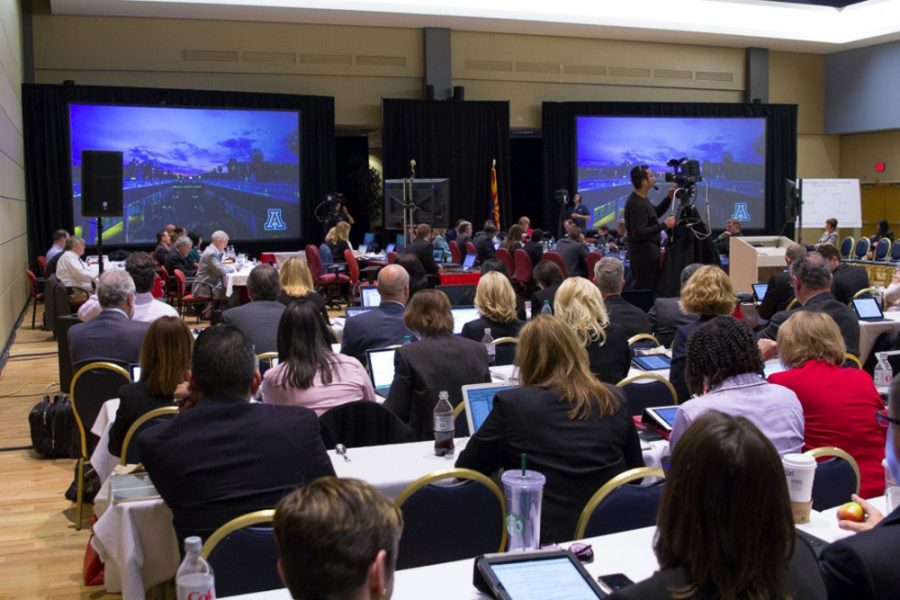UA administrators presented a progress report to the Arizona Board of Regents earlier this month that illustrated how UA student engagement has grown and continues to be a main focus of the university.
Never Settle, the UA’s strategic plan, originated after administrators and faculty determined what qualities the UA already had and could further enhance to give students a world-class education and experience, said Andrew Comrie, provost and senior vice president for academic affairs.
“The plan is what makes us truly distinctive,” Comrie said.
A presentation to the board of regents outlined a graphic illustrating how in traditional teaching classrooms, students were listening to lecture for 69 percent of their time in class and only answering questions for 14 percent.
In the new “active learning” style, teacher and student interaction increased causing student listening to decrease to 34 percent, leaving 16 percent for answering questions but adding 11 percent of class time to allow students to engage with one another through a group activity.
Regarding the instructor, the traditional style had them lecturing for 46 percent of class time, but it has now been redefined to 10 percent, while they are often individually interacting with groups and students in discussion.
Never Settle focuses on four main pillars: engaging, innovating, partnering and synergy, all of which can be seen at UA right now, Comrie said.
However, a main focus has been to improve student engagement and make sure it is at 100 percent. To make that happen, the UA introduced several student engaging enhancements in attempts to make the overall UA experience distinct.
When evaluating the homestyle, the “stage on sage” teaching and learning approach — which was employed in many UA classrooms — was not found to be the best way for students to retain information, Comrie said.
As a result, more interactive, engaging styles were introduced to professors and students to follow a “100 percent real-time, real-world” experience.
This includes more group interaction between students, as well as focusing on core components instead of attempting to cram too many ideas into one class period, an approach that has seen success, Comrie said.
According to a progress report for the Never Settle academic program, in spring 2014, students’ grades were measured during an Introductory Physics with Calculus final exam after some had been learning in the traditional style and some in the redesigned style.
The redesigned style ultimately turned out better exam outcomes, indicating that those students who took the exam after learning in the active style had an overall 10 percent higher score.
The presentation also showed that internship opportunities have increased by 13 percent, adding more than 400 opportunities for students, such as those that are co-curricular. One new addition is the UA’s partnership with Mister Car Wash, which now provides students with various internships from marketing to accounting all over the U.S., said Melissa Vito, senior vice provost of academic initiatives.
Vito also added that after studying retention rates for students, those who were struggling in math were significantly less likely to remain students at the UA.
To help with this, the Schedule for Success program was introduced in 2011 to assist students with math and take the subject at a slower, more personalized pace.
As a result, math success increased by 10 percent from 2011 to 2014, Vito said.
Comrie added that integration between real-world experiences and what students learn in the classroom is key and is something employers look for.
“We ask ourselves, ‘What do we do that makes your education worth even more when you come out of here?’” Comrie said.
Vito and Comrie said student engagement will continue to be a focus in the future and throughout Never Settle’s presence at the UA.
_______________
Follow Adriana Espinosa on Twitter.









